“Autoimmune disease is an epidemic in our society.
But it doesn’t have to be.”
~ Sarah Ballantyne
Introduction
By now, most of you have heard of the Paleo Approach. For those of you who haven’t, it’s the most comprehensive book ever written on the topic of reversing autoimmune disease. Seriously, I’d call it the autoimmune bible. The author is Sarah Ballantyne, Ph.D., also known as the Paleo Mom. She’s a research scientist specializing in inflammation and immunity, and she has an autoimmune disease herself, making her uniquely qualified both personally and professionally to write a guide to healing. Her focus is the Paleo Autoimmune Protocol (AIP).
What I Love About This Book
- The first thing you’ll notice is that it’s gorgeous. It’s full of colorful graphs, photos, illustrations and textboxes that summarize and accentuate the information contained in the text.
- The second thing you’ll notice is that it’s big and heavy! Sarah read over 1200 scientific studies and condensed that knowledge into a 432 page book, which is part science textbook, and part a practical how-to guide. It’s also printed on 8-1/2 x11 paper, which is twice the size of a normal book. (Don’t take it into the bathtub with you, unless you want to do some strength training for your arms. I’m speaking from experience here.)
- It’s functional. The front and back covers have foldover flaps for you to use as bookmarks. Color coded corner tabs let you flip through the book quickly to find information. Every chapter ends with a review page that highlights the most important points covered in that chapter. There’s an index, a glossary, and detailed food guides, including vitamin, mineral and amino acid profiles of hundreds of different whole foods. This book was designed to be a reference book you can use daily to find the answers you need.
- It’s impressive. The leading names in the paleo movement have all endorsed this book. Robb Wolf wrote the forward, and the back cover is filled with praise from Dr. Davis, Dr. Kharrazian, Dr. Wahls, Paul Jaminet, Diane Sanfilippo, Melissa Hartwig and the Caltons.
- It’s personal. Interspersed throughout the scientific text are personal testimonials of real people, like you and me and the author herself, who have all used the Paleo Approach to heal.
- It’s honest. At the start of the section where she describes how to implement the Paleo Approach in your own life, she says this, “Let me be clear: there is no cure for autoimmune disease. Once your body has developed the ability to attack itself, if will never forget how to do so….(However), following the Paleo Approach is the next best thing because it can put your autoimmune disease into remission….for the rest of your life!”
- It’s in depth. No matter how much you know about autoimmunity and nutrition, you’ll find new information in this book. Even experts in the field will learn something.
- My favorite section, if I had to pick one, is the Troubleshooting Checklist. It’s a list of questions to ask yourself if you aren’t seeing improvements after 3 months on the protocol. Sarah was kind enough to let me include it here.
Some Clarifications
If you’re familiar with the autoimmune protocol generally, and the Paleo Approach specifically, you’ll find a few changes in the book that might surprise you at first. I clarified them with Sarah:
- Added Sugars: In the book, Sarah has a new category on the “Foods to Avoid” list, called “Added Sugars” and includes everything from high fructose corn syrup to raw honey. However, in her “Foods to Eat” list, she includes honey, maple syrup and molasses as pantry items. I asked her to clarify, and she said, “This is an acknowledgement to the fact that we are all human and there are times when a special treat can make all the difference in the world in terms of sustainability. So, it’s a list of best choices if you are going to have a treat. The number one factor in determining how much can be used is maintaining blood sugar regulation, which will depend on other foods being consumed and the individual’s sensitivity. The number one factor in determining frequency is how the individual’s body responds to those treats.” In other words, avoid added sugars as part of your daily diet, and pay attention to your body when deciding how often to include treats in your life.
- Wiggle Room: While Sarah Ballantyne believes the full Paleo Approach is the quickest path to healing, she understands that some people might find it intimidatingly restrictive. With that in mind, she has identified a list of foods that are least likely to be problematic for people with autoimmune disease. These are the foods she recommends reintroducing first. Or if you need a bridge between regular paleo and strict AIP, these are the foods she feels are safest to continue eating during that transition: fresh legumes (green beans and peas), fruitbased spices, seedbased spices, seed and nut oils, ghee from grass fed dairy, and egg yolks.
- Stage 4 Reintroductions: You might be surprised to see this category in the book, because it lists foods that aren’t paleo as possible reintroductions in the future, including soaked and fermented legumes, and soaked and fermented grains. Sarah explains their inclusion in the book as foods people who eat an 80/20 version of paleo might include as part of their 20% flexibility. She doesn’t necessarily recommend people with autoimmune disease reintroduce these foods at all. They’re listed as one of the last reintroductions accordingly, and should only be tried if all other reintroductions have succeeded and your autoimmune disease has been in remission for a long time.
- Medications: In this chapter, Sarah lists the medications that can cause leaky gut, and therefore cause autoimmune disease. Ironically, this list includes almost every medication ever prescribed for autoimmune disease symptoms: painkillers, steroids, digestive aids, hormones, immunosuppressants and antibiotics. Some people misread this information as a directive to go off their medication. Please don’t. Your symptoms need to improve enough that you no longer need the medication, before discontinuing, and that kind of healing takes time. Going off your medication cold-turkey will almost always increase your symptoms and provoke an autoimmune flare. Sarah says this very clearly at the end of the chapter: “Changing, tapering, or discontinuing your medication – especially if you are taking prescription drugs, but also any daily over-the-counter medication that your doctor may have recommended – should, without exception, be done under the supervision of a health care professional. I must also emphasize that changing your medication is not, in most cases, something to tackle when you initially adopt the Paleo Approach. By improving your diet and addressing lifestyle factors first, you will be able to heal your body as much as you can while you are still taking these drugs, which will significantly help you adjust to discontinuing them.”
Critique
- If I Could Add One Thing: Honestly, this book is amazing and there’s very little to critique. If I was given one editing wish, I would add a 1-page quick summary of the protocol at the start of the book. Something you could cut out and stick on your fridge as a reminder.
- Handling the Stress Factor: If you’re new to the paleo autoimmune protocol, reading the book can be overwhelming. It’s a challenging program, but Sarah helps by offering options for transitioning into the protocol – either going “all in” or taking it one step at a time, and she gives suggestions for baby steps. She also has a big section on lifestyle factors, such as reducing stress and getting more sleep. Those factors are essential in healing, but they’re also excellent tools to take care of yourself as you do the protocol itself. Use them!
Interview with Sarah (the Author)
Since Sarah has an autoimmune disease (lichen planus), she wrote this book for herself as much as she wrote it for all of us. Through the Paleo Approach, Sarah put her autoimmune disease into remission and also healed a myriad of health conditions: IBS, acid reflux, migraines, anxiety, asthma and allergies. I asked her to share some details about her experience:
How many times did you attempt the Paleo Approach before successfully completing a strict elimination period, without cheats?
When I first started, there was almost no information out there about why’s behind Paleo Approach eliminations and even a lot of conflicting information on exactly what to eliminate. There was also no information whatsoever on what superfoods to eat more of and zero information on the importance of lifestyle factors. That lack of information really slowed me down in my own implementation. It took me about four months to realize that I should eliminate coffee, that paprika was a nightshade, and I lived in denial about needing to cut out chocolate for months. From the time I decided I needed to modify a paleo diet for my autoimmune disease to when I really understood exactly what the Paleo Approach meant was about 10 months (although, I figured out the elimination piece at about the 4 month mark and did see improvement then). It wasn’t so much about falling off and getting back on the wagon, so much as discovering what exactly the wagon was in the first place! And of course, this experience was one of my main motivators for writing The Paleo Approach. Now, the information is compiled and set out for others to follow without the dragged-out process of accumulating knowledge that I had to go through.
What foods have you been able to successfully reintroduce, and how long did that take?
I have successfully reintroduced grass-fed ghee, soy-free pasture-raised egg yolks, and most seed-based spices. I do okay with small and occasional amounts most nuts, seeds, egg white, and coffee, but definitely reserve these for very occasional treats and only when my stress is well managed and I’m getting enough sleep. It took almost a year from when I had the Paleo Approach nailed down to when I could consume these foods without problems.
The book is an incredible gift to the community, but came with a sacrifice: the work it entailed caused your autoimmune disease to flare. What steps have you taken to regain your health?
The biggest thing I’ve been focusing on is sleep. I’ve also been carving out more time for stress-management activities, including walks and strength-training classes. I also opted to delay the release of The Paleo Approach Cookbook so that I could slow my pace a little to look after myself better.
What is the most challenging aspect of the Paleo Approach, for you personally?
Page 246. “It’s okay to say no.” I’m terrible at saying no and have a bad habit of overcommitting myself. This has the snowball effect of increasing my stress and decreasing the amount of time I can commit to stress-relieving activities and sleep.
A Video Preview of the Book
You May Also Be Interested In
Update: A giveaway was held to celebrate the publication of this book, and the winner was chosen with a random number generator. Congratulations to Flavia Gomes! If you didn’t win, don’t despair. The book is reasonably priced and worth every penny. You can purchase a copy here.

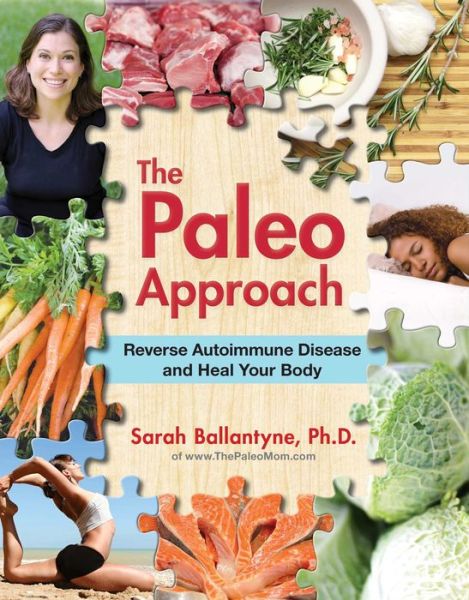
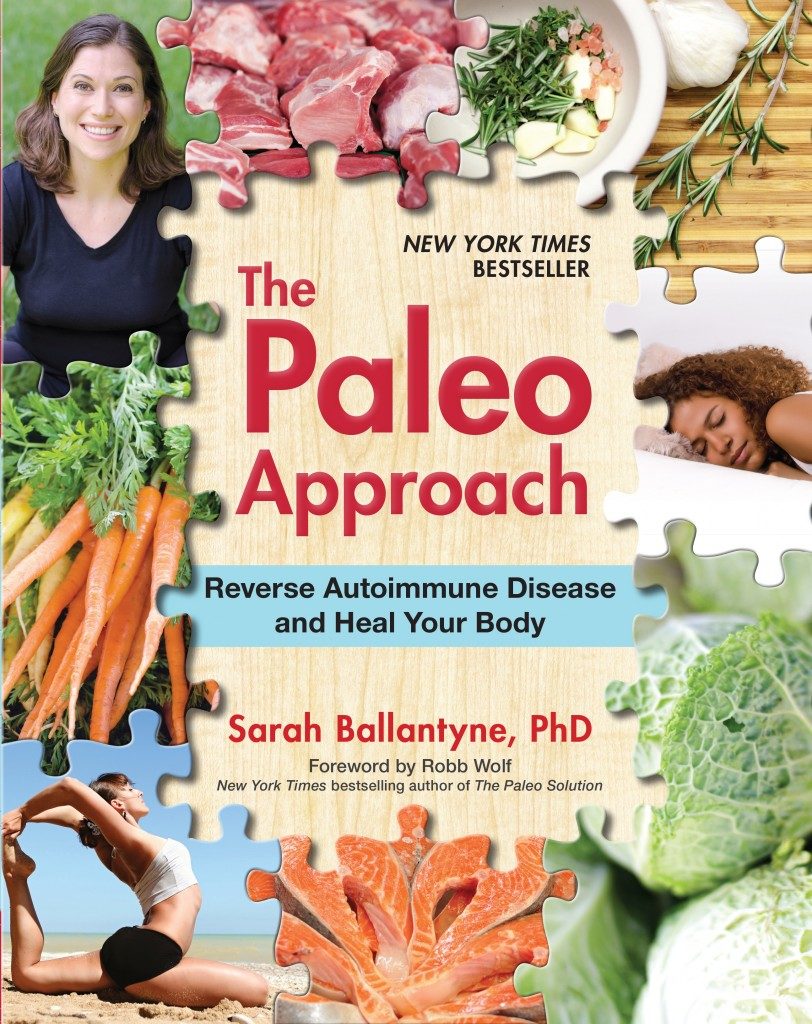
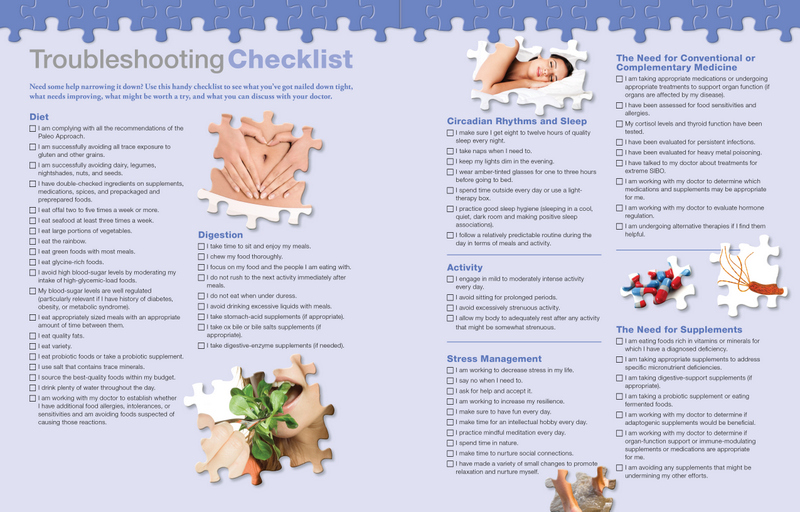


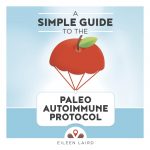
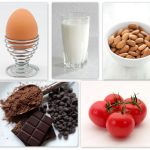
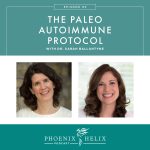

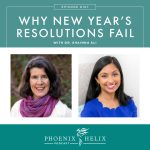
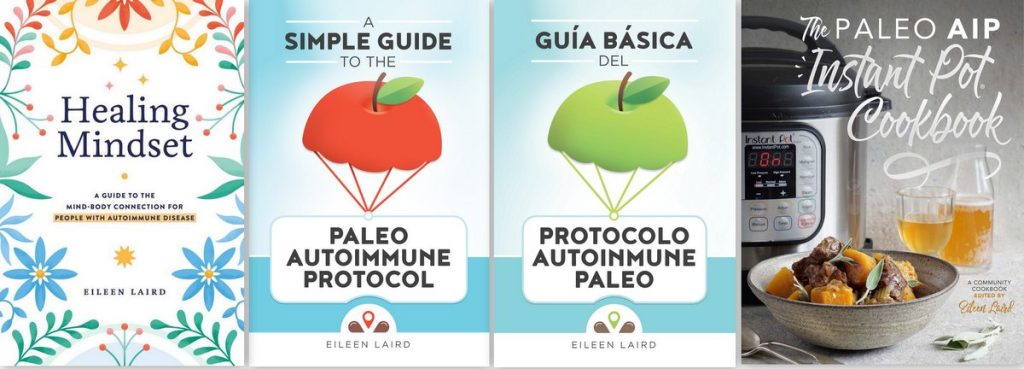
Thank YOU Eileen!
I still can’t believe! I am so happy!!!!
I am in my 12th day of AIP + FODMAP and going strong. This book will definitely help a lot!
Thank you for the amazing website also! 🙂
Big hug!!!
And the winner is….Flavia Gomes! I’ve sent you an email, Flavia. Thanks to everyone for participating.
I liked you on FB. I suffer from M.E./CFS and have been eating paleo for about 9months but I haven’t seen a lot of benefit so I’m starting to think I need to tweak it & try the autoimmune protocol. Sarah’s book would be a great help in doing this! Thanks for the giveaway!
I liked your facebook page. I’m so glad to have found another wonderful AIP blog!
I liked your FB page. I am really happy I did because I think your page will really help me in my pursuit of a happy and flare-up free life!
Great review! I’ve been a fan of yours on FB for quite some time. 😉
Eileen I liked your page and I have subscribed to your blog. This book would be a godsend to so many including me. I have had it in my wishlist on amazon for a while but have not been able yet to purchase it. I suffer from several autoimmune problems. I have been sick for 7 1/2 years now and have been doing it pretty much on my own. This book sounds like it is really what I need to help turn around alot of my issues like fibro, hashi, candida, leaky gut, adrenal exhaustion for starters. Thanks so much to this awesome giveaway.
I liked your FB page! Thanks for your detailed review of this book!
I would love a copy of the book! I need to move forward in my journey to healing (Hashi’s), and that requires knowledge. Thank you! (I liked fb page and subscribed to blog)
Thanks for sharing your wisdom with us!
I would LOVE a copy of the book!! Thank you!!
Facebook page liked 🙂 in need of guidance switching to a paleo lifestyle. Trying to reverse
ankylosing spondylitis, leaky gut and systemic candiadasis from 8 years of treatment.
So glad I found your blog…just signed up for emails…and liked your facebook page! I was diagnosed with RA a few months ago and have been looking for information on lifestyle and dietary changes that I need to make.
I like you on Fb. That is so funny. I just looked this book up on amazon today. But wanted to wait for the cost to come down. Thanks for the chance.
I like your page on FB and I love your blog. Thanks so much for all the work that you do!
Oh this is one AWESOME giveaway! Thanks for this offer…I subscribe to your wonderful blog!
We should all read The Paleo Approach. So many have family members who have autoimmune disease or sensitivities. This knowledge can be life changing. With a thorough understanding of the mechanics of our bodies, compliance with restrictions will be encouraged. The Paleo Approach has diagrams, charts, and lists that help us all to understand how our bodies react to certain foods when we have autoimmune diseases. Thank you again, Sarah, for writing a book with such detailed information that we all should appreciate.
I subscribed to your blog to enter. Been paleo-ish for 7-8 months, but thinking that I might need to go further with the AIP approach. Scares the dickens out of me – my brother has RA bad & takes heavy meds – I was diagnosed with OA at 17 (I’m 60 now). I’ll need help with the protocol.
What a great giveaway! I have been reading about this book and I think it might be the game changer I need to feel better and get better.
Thank you for the chance to enter, I liked your page on Facebook!
Its wonderful to have the thought of giveaways that includes international readers too. I am a reader UAE. I liked and had a post on facebook. I awaiting the book coz its seems too amazing facts revealed.
I’ve just subscribed and liked your blog onFB. I would love to get the book. My Husband is suffering from Psoriasis and I am trying to determine what exactly the AIP entails so that we can implement it. Thanks for opening up the giveaway to non-US readers (I live in the UK)!
Changing your diet for Psoriasis is key. I have had it my whole life. Once I changed my diet (most my problems disapeared). Then olive oil rubbed all over the body every night. Helped me. Most doctors don’t believe me I have kept mine away for going on 10 plus years now. Coconut oil has helped others but olive oil did it for me. Just make sure it is real virgin olive oil. I also drink a tbsp a day with lemon.
Thanks for having this giveaway! I ‘like’ your FB page! Going to start on the AIP soon…
I also have liked on FB.
I just got this book and have started reading and finding so many answers to my questions about what is happening to my body. I know it is going to help with my autoimmune diseases. I wish I could afford to get another book for my 25 yo daughter who seems to developing symptoms also. I really like your blog.
I like/LOVE you on Facebook and I am also an email subscriber. Thank you for being so generous with your time, knowledge and shipping! 🙂
I am a member of your FB page. I have been reviewing various sources to see if AIP/Paleo diet is right for me. I am Hashi and even though GF, seem to be continuing to have issues.
I subscribe via email! 🙂 I have been looking forward to reading this book, thanks for the opportunity to win it !
Would love to get this book! I’m a subscriber and ‘liker’ of your facebook page.
I can’t think of a more empowering nickname than Phoenix, so it’s all good!
Saw the video review. Wow! What a comprehensive book. Would be great to have in my arsenal to getting well again. Thanks for sharing it with us.
Hi! Thank you for this opportunity! Email subscription here. I am living in Italy and the book is not coming out soon… 🙁 So this would be great chance to have the book since I started my AIP + FODMAPs last week and I am looking forward for more detailed information!
Big Hug!
Flavia
Oh I´d love to have the book! 🙂 I subscriped to your blog via email 🙂
I Like Phoenix Helix on Facebook.
Hey Phoenix. I am already a fan on Facebook but now I’m signed up for emails. I would love this book! I just realized your name is Eileen and not Phoenix! I’ve been calling you Phoenix the whole time! Oh well! I assume you go by both. I want an alter ego for my Hasimotos!
I already subscribe to your blog, which is how I learned about this giveaway. I wasn’t sure about the book originally, but now that I have seen the video, I know I want a copy. Please enter my name into the giveaway.
Eileen, thank you so much for sharing your journey with us. Your site has been so helpful to me as I begin the AIP leg of my journey to health.
I have been gluten free for 3 years but developed RA this summer after months of struggling with a frozen shoulder. I am determined to whoop this disease, but seems like a daunting task to put out the inflammation fire! I keep looking at AIP, SCD, GAP, FODMAP, Virgin diet, etc. and don’t know which way to turn…thanks for this opportunity to win this book! I am one of your subscribers.
I subscribed to your blog. Just beginning the AIP, thanks to you and so many other great bloggers including “Paleo Mom” its much easier to navigate.
Hi Eileen,
I just found your blog through paleomagonline. I’m so thankful for it! I just liked your FB page and signed up for your newsletter!! Pick me! Pick me! I’m starting the AIP protocol on Mar 1. I’ve had RA for almost 20 years and am ready to be done with it!! 🙂
Welcome, and good luck! The winner will be chosen with the help of a random number generator, to prevent any bias on my part. I wish I could give you all a free copy!
Great review! I would love this book.
I liked you on Facebook. I love Both of your websites. I’d love to win a copy as both you and Sarah are an inspiration to me.
I have had Sarcoidosis for 19 years now and have never tried to get better via diet, other than eating healthily, but I know there are many things I could amend … the book looks like what I need!
I “liked” your Facebook page. Really hope I win!
I subscribed to the newsletter. Thanks for showing us the troubleshooting section. I found it very interesting!
Just subscribed to your blog. Thanks for your work here!
I already subscribe to the emails and I’m a fan on Facebook. Thank you for the review and giveaway. I really need to read this book! 🙂
What an awesome resource! I’m looking forward to reading it, and looking more forward to implementing and tweaking my life.
I am subscribed to your blog.
I already subscribe and would love to win this beautiful thoughtful book
I’m already a Facebook fan!
Looks Great! Thanks for all of the valuable information and resources.
This book looks awesome. Thanks so much for the review. I recently found your blog via Real Food Forager and it has been a big help to me. I have AI Thyroid and have been trying the paleo approach but it’s a bit too soon to tell if it’s making a difference in my antibodies. I do know that I feel a lot better on many levels so I am hopeful. I already am a subscriber and I follow on Facebook as well. Thanks for all your help.
Hi Judy. The fact that you are feeling better is a very good sign. Healing takes time, so don’t be discouraged if your antibodies don’t go down right away. It took a long time for them to get that high, and it takes an equal amount of time for them to dissipate. Patience and persistence are two of the keys to healing.
Am a subscriber and liked your FB page. :o)
I signed up for emails
I liked your page on Facebook.
I like you on fb
I had already followed you on FB and now I’ve signed up for your blog updates, too. Thanks for everything you do, Eileen 🙂
I liked you and have signed up for emails, which I very much enjoy
Long time fan! Well loved on FB and already blogged on! You are getting an amazing following! xoxoxo
Thanks, Eileen, for spreading the word about Dr. Sarah’s book! I have ordered a copy and hope to get it this week, however, I would love to win one to send to my sister who also is suffering from auto-immune issues. I forgot to say I “liked” you on Facebook. 🙂
I’m already a subscriber to your blog and enjoy it very much. Went gluten free in Dec 2010 and began an elimination diet in Dec 2011 as part of getting some answers to health problems that were worsening (Hashimoto’s), but the elimination diet didn’t show anything clear cut about what I could addback. When I found Sarah’s blog/website I understood why…the elimination diet allowed things the AIP does not. Many choices in my life are not under my control because of my circumstances, so trying to afford the AIP protocol, get on the AIP protocol and stay on it has been difficult. I think Sarah’s book would be a great support in getting on the right track and helping others in my life understand what I need to do for myself and why. I hope to win a copy of the book, but know that whoever does, will be greatly blessed by it. Thank you for your blog and sharing your journey with us, Eileen! It’s a great resource and support!
I follow you via email. After years of digestive issues, there seems to be hope, and light at the end of the tunnel. I would love a copy of this book – thanks for a great giveaway.
I’m a Facebook fan and a subscriber via email. Thanks for the giveaway!
Hey Eileen, thank you for this opportunity. I ordered the book using a gift card from Barnes and Noble, unfortunately they don’t know when they will be getting the book so they have cancelled my order. I would love to have the book. I am working diligently to be well but it takes a book like this to help you make the adjustments necessary as new things crop up! I follow your blog and your FB posts. Thank you.
Wow, that must mean the first print run already sold out within a week of publication. Is this book needed, or what? The publisher has already started the second print run, so it should be restocked in 2-4 weeks.
I thought her facebook page had all the information, but after this great review I see I need to go further and research even more. This book would be a wonderful help in my adventure in finding ideal health!
By the sounds of your review, this book will help me navigate my recent diagnosis of RA and kick it into remission without utilizing dangerous prescription medications. I am thankful for your insightful blogs and facebook posts.
I’ve signed up for your emails! Thank you for offering a chance to win this book! I have an autoimmune disease and would be very interested to see how this way of eating can help.
I’m a fan of you on face book too!
I’m in for the book.
I have a copy of the book myself and it is amazing. I have many of the same conditions that have been improving steadily as I’ve been following the AIP. My father struggles with many of the same health issues along with many more and I would like to give him a copy of the Paleo Approach. I liked your page on Facebook and would love to be considered for the giveaway. Thank you for a great review.
I follow you on Facebook. Well written review. I can’t wait to read the book!
Thanks for this review and interview! I liked your page on facebook. I’ve been trying different approaches for years without success to solve my health issues, including autoimmune issues like eczema. I’d love to have this book to guide me because I’m tired of the confusion of what foods to eat, what foods not to eat, what supplements to take…And I don’t have a job right now so it’s difficult for me to invest on this now. I’d love to win this book!
I’m already a fan and will subscribe as soon as I get to a computer. I’d love a copy of Sarahs book! Thank you for all the grat work you do for the AIP community!
*great*… and I’m now a subscriber too.
I subscribe and like your fb page. Would love to win!
Would so love to get my hands on this book!!!
Thank you for opening the giveaway to the whole world(I’m a reader in Greece)!
I’m already a subscriber and I have to say I always learn something new from your posts! Thank you!
I’ve signed up and liked.. I’ve already ordered the book but would love to gift a copy to my Doctor’
I liked your page on facebook. I have been reading your blog and I didn’t realize I hadn’t liked your facebook page. Paleo has turned my life around(RA,Sjogren’s,Celiacs), I actually think I will be able to get off disability this year.
Maria, that is awesome!
Liked on Facebook and signed up for email alerts. Keeping my fingers crossed, this book looks amazing 🙂
I did not realize this was your page. I follow on Autoimmune Paleo Recipes. Love that page. I will now be following this site, too. Thanks for the contest. I think this is awesome!
I subscribed to your blog!
I’m 1 month into AIP and feeling great. I have so much to learn!
Congratulations on your first month, and feeling great!
I “Liked” your face book page. My sister is gluten intolerant and has recently started the Paleo diet after I found your site and told her about it. She has Fibromyalgia and when she told her Dr. eight years ago that she was eating a gluten free diet and feeling better than she had in years the Dr. told her that she needed to stop eating that way immediately. So she did… to my great dismay. It took me eight years and her coming to the end of her rope before she was open enough to try again. Thank you for your blog! I love to read the info here! I also pass the information on to my sister (Who by the way is doing much better) so that she can benefit from the information as well
Wow, it’s frustrating enough when doctors don’t believe the food we eat affects our health. Hers actually advocates an inflammatory diet – crazy! I’m glad she has you as a support and another point of view.
I liked your page on FB. I would love love to have this book. Thanks for the review.
I joined the Pheonix Helix FB page. Thank you! 🙂
I liked your page on FB! I’d love to get my hands on this “bible”.. 🙂
I am already a fan on facebook..thanks for great the giveaway! 🙂
There is an entire community eagerly waiting to get their hands on this book to help them on their road to health. I am looking forward to her cookbook already! PS Do you ship to Australia?? Having recently discovered your site, Congrats and keep up those great recipes!
Sarah donated the book, and I’m donating the postage. It’s a heavy book, so it’s not cheap to ship, but I decided you all are worth it, so yes, this giveaway is open to the whole world.
I am already a fan and subscriber! So excited about this book. I would love to win but either way I’m getting a copy! 😀